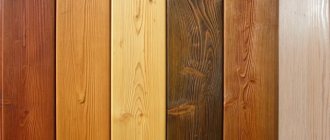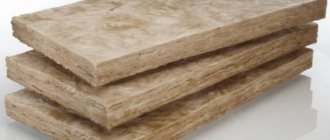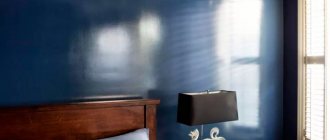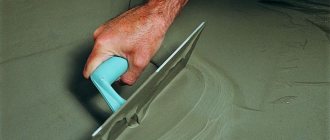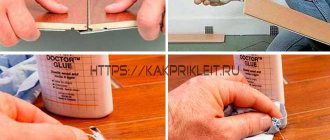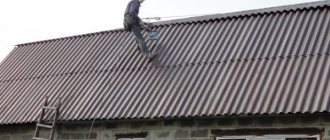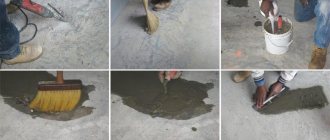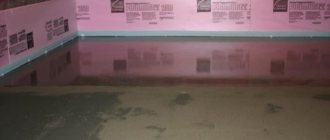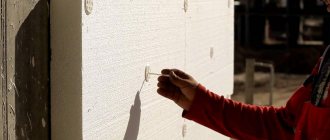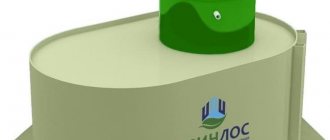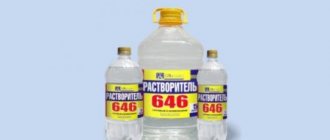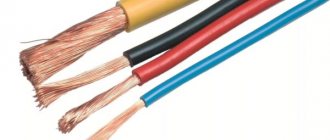Natural wood in the interior is gaining popularity by leaps and bounds. And wooden floors are no exception. But there was a time when wood was considered a “relic of the past” and was actively replaced with newfangled linoleum. Now people have realized how wrong they were when they replaced the natural with synthetic material. In this regard, the question of what varnish to cover a wooden floor has again become relevant. We will talk about this in the article.
Why is it necessary to varnish a wooden floor?
For a wooden covering to always look good, it is not enough to make it from high-quality wood, lay it correctly and sand it. Without a protective layer, it will not retain its fresh appearance and beauty for a long time - it will begin to fade, turn gray, crack, get dirty, and become covered with stains that are difficult to remove. And soon you will not be able to enjoy the pleasant shade and beautiful texture of wood.
All the disadvantages of this natural material, vulnerable to external influences, can be easily mitigated by using parquet varnish as a finishing coating. It performs several functions at once:
- protects against mold and mildew that colonize wood at high ambient humidity;
- prevents its damage by insects and small rodents;
- creates a film impermeable to water, thereby preventing swelling of wooden floor elements;
- forms a durable coating on the surface that is resistant to abrasion, mechanical loads, and pinpoint impacts;
- preserves the natural color of the wood or, in the case of using a tinted composition, gives it the desired shade;
Using varnish you can change the color of wood and imitate more expensive species Source moi-pol.ru
- enhances the contrast of the wood pattern, making the flooring more expressive and impressive.
Many covering paints have similar protective properties, but they hide the wood itself with its unique fiber patterns. Whereas water-based parquet varnish and other varnish coatings retain its natural appearance.
How to make pine floor boards
Pine
is an excellent building material. Houses are built from it and various lumber necessary for finishing and constructing buildings outside and inside is made. Responsible manufacturers of wooden products carry out a range of work on harvesting, drying, calibrating, culling and processing natural wood.
On special machines, pine logs are cut into boards of certain sizes, and the edges are trimmed. The resulting products are thoroughly dried so that they do not subsequently warp or turn blue on the floor. Among the finished products there are boards with a large number of knots and relief defects. They are used to create a subfloor. The conditioned material is subjected to shavings, grinding, the edges are perfectly aligned and impregnated with special compounds that protect it from rotting and insect invasion.
When heated too much, pine boards release resin. To avoid this during operation, they are coated with varnish, mastic or painted. Treated wood flooring boards made from natural pine have qualities that make them popular in the construction market.
What to consider when choosing varnish
The main thing you need to pay attention to when choosing a paint coating is the scope of its application and operating conditions.
Place of application
Wooden floors can be used not only in the house, but also on the open terrace or in the gazebo. To finish them you need different parquet varnish. It is clear which one is better to choose to create a durable coating outside the walls of a warm house: it must be intended for outdoor use and have the appropriate mark on the packaging.
Varnish for exterior use Source gidpokraske.ru
Temperature
Not all varnishes can withstand exposure to negative temperatures or periodic temperature changes from plus to minus values. In such conditions, only frost-resistant compounds can maintain the strength and integrity of the coating. Therefore, even inside the house, if it is not heated in winter, varnish is used for external use.
Additional protective properties
Sometimes there are special requirements for the coating. For example, in conditions of constantly high humidity, wood must be protected from the appearance of fungus, and in rooms with a stove or fireplace - from accidental fire. There are varnishes on sale that contain antiseptic additives. You can reduce the risk of a fire from a coal falling out of the fireplace by treating the space in front of it with fire-retardant varnish.
Compositions with fire-bioprotective properties are more expensive than usual Source epkrt.ru
Loads
The main question about parquet varnish is: which one to choose for the living room, and which one for the kitchen or hallway. This depends on the functionality of the room and the load on the floor covering. In places with little traffic, the absence of heavy furniture and equipment that has to be moved, you can use coatings that are not the most resistant to mechanical stress.
But in the kitchen and hallway, children's playroom and living room, where dancing is often held, a wear-resistant floor varnish is needed. Otherwise, you will have to renew the coating too often.
The surface often suffers from walking on it in street shoes Source parketplanet.ru
Composition and properties
Any paint and varnish product, after complete drying, ceases to release harmful volatile substances into the environment that may be contained in it. This only happens when the surface is very hot. But not everyone has the opportunity to leave the house during repairs, and in such cases you should choose a parquet varnish that is quick-drying, odorless, and does not contain substances that can cause allergies.
You need to be especially careful when studying the composition of the product if you are going to varnish the floors yourself.
See also: Catalog of companies that specialize in finishing materials and related work
Color and texture
Varnishes are colorless and tinted, glossy and matte. There are even compounds with an anti-slip effect that include abrasive particles. All these decorative and operational features of the coating must be taken into account and correlated with the overall appearance of the interior or surrounding space.
It is better to select the color based on samples with dyes Source vs71.ru
Note! In stores, painting is usually done on a pine board. The selected varnish may look different on a different type of wood.
Wood species
Different wood species differ not only in color and pattern, they have different hardness, density, resistance to moisture and other influences. For example, larch, due to its dense structure and special properties, does not particularly need protection; it is enough to apply a decorative coating with average wear resistance. This could be a water-based acrylic floor varnish.
But pine and spruce wood is soft, so you need to create a durable, wear-resistant coating that can withstand mechanical loads well.
Particular attention should be paid to parquet flooring made of oak and exotic woods. The tannins and essential oils they contain can be released to the surface, forming unsightly dark spots. Before varnishing, such a floor is treated with a neutralizer or primer.
Primer for wood Source stroyfora.ru
Advice! It is recommended to pre-treat any hardwood with a transparent bioprotective primer with an antiseptic.
General information
Such a protective coating can be called a moisture-resistant, wear-resistant floor varnish, which, due to its chemical composition and qualities, can be applied to both concrete and wooden floors. There is a wide variety of building materials and paint coatings on the modern market, which is why buyers cannot make a choice for a long time.
How to choose a varnish
When choosing a product (varnish) to cover a floor, the buyer usually tries to catch three birds with one stone:
- Give the flooring a noble color.
- Create a protective layer that will prevent damage to the wood.
- Choose a varnish that will match the interior.
Moisture resistance and wear resistance of varnish for a wooden floor are of great importance, and when choosing it for protection, consider the following points:
- Possibility of post-processing.
- Has the wood been pre-prepared and treated?
- Tree species.
- Compatible with old paintwork.
- Terms of Use.
Regarding operating conditions, you should pay attention to how much traffic there will be in the room and what level of humidity. For heavy loads, you should choose a floor varnish that is moisture-resistant and wear-resistant.
When reading the composition, you can determine the protective properties of the varnish, for example, alkyd floor varnish is a kind of protector against high levels of humidity, alkyne-urea varnish makes the coating durable and reliable, petroleum-polymer or oil-based is excellent for places with heavy loads and traffic.
Parquet varnish, which is used to cover wooden floors, is extremely popular among buyers - it can be acrylic, alkyd and water-based.
When choosing a floor varnish, you should decide which one will be best for you based on the three criteria described above, as well as on gloss and shade.
An equally important role is played by the lighting of the room, architectural features, color of the ceiling and walls, since it is precisely for these data that you can choose a varnish of a certain color, as well as choose a matte or glossy sheen according to your preference.
For a light floor, matte floor varnish is perfect, where there is good lighting and the room is spacious - a wonderful shade and shine will highlight the beauty of the wood. It is better to choose a glossy floor in rooms with poor lighting and small size, since gloss can visually add volume and reflect light.
Due to the development of modern technologies, there are also floor varnishes that also have a certain shade. Yes, these are colored floor varnishes that appeared relatively recently, but the designers immediately liked the interesting solution of the manufacturers and was appreciated, giving them the opportunity to realize the best and newfangled ideas.
Buy Floor Varnish in Petrovich =>>
Types of varnishes
The properties and characteristics of the varnish largely depend on the type of solvent, which can be water, organic resins, or alcohol.
- Water-based parquet varnish is a quick-drying, virtually odorless composition.
- Varnish based on organic solvents usually has a pungent odor, which disappears only after the final polymerization of the coating.
- Alcohol varnishes have a characteristic odor that quickly evaporates and does not harm the body.
The most durable and wear-resistant products are those based on organic resins, which can be one-component or two-component. The former are a ready-to-use solution, the latter are prepared before use by mixing two components - a base and a hardener.
Tips for caring for varnished floors
Varnishing parquet is a rather labor-intensive and time-consuming process.
Therefore, it is important to keep the varnish coating in its original form for as long as possible. In this regard, here are a few tips that will help preserve the coating for as long as possible:
- after the last layer of varnish has dried, you should not walk on the floor for several more days;
- if you plan to cover the surface with carpet, then you should wait at least 10 days for this;
- We glue felt attachments onto the furniture legs from the end;
- At least once a year it is necessary to carry out control varnishing in one layer. You can use quick-drying varnish for this.
When starting the varnishing process, be sure to pay attention to the composition of the varnish. And following the advice on the technology of its application, we will get not only a parquet floor, but a floor covering of the highest quality
In addition, you can use this type of varnish for laminate flooring, thus protecting its surface from damage during operation.
Video description
How to mix and apply two-component varnishes, watch in the video:
Varnishes are classified according to the type of synthetic resins they contain, which are the base.
Acrylic
Acrylic floor varnish is odorless, quick-drying, as it is water-based. Its advantages are affordable price, ease of application, non-toxicity. But the moisture resistance and wear resistance of such compositions are low, they do not withstand abrasion and mechanical loads well, therefore they are recommended for use in dry rooms with little traffic - in bedrooms, offices, living rooms.
Advice! To prevent the water in the varnish from penetrating into the wood fibers and causing it to swell, it is advisable to prime the floor before decorative finishing with such means.
Acrylic parquet varnish Source vse-kraski.ru
How to evenly coat a floor with oil video
Due to its environmental friendliness and attractive appearance, wood is increasingly used for finishing both interior and exterior spaces. Preserving wood flooring is the primary task of anyone who is lucky enough to have parquet, plank, or laminate flooring at home. And if previously the floor could only be painted, today specialized products that can be easily applied by hand can help protect the coating. Choose a composition depending on your financial capabilities, type of wood and environmental conditions and enjoy a beautiful wooden floor for decades!
Wooden floor made of pine boards
– guarantee of quality and comfort.
The quality of renovation in an apartment depends on many factors. One of them is the correct choice of flooring. Nowadays there are many practical and easy-to-install and use artificial materials. But natural wood floors never go out of style. Treated pine boards are especially in demand. Their popularity is achieved by many indicators.
Video description
This short video shows what alkyd varnish looks like on parquet:
Urethane
Inexpensive urethane varnishes have average resistance to stress, excellent elasticity, water-repellent and anti-slip properties. Suitable for kitchens, bathrooms, stairs, including street ones. They are rarely found in their “pure” form.
Acrylic-urethane and alkyd-urethane compositions, which combine the advantages of all resins included in the composition, have higher strength indicators. Water-dispersion mixtures with the addition of acrylic are chosen when you need a wear-resistant, moisture-resistant floor varnish, for interior use, and odorless. For example, for decorating a children's room or bedroom. Alkyd-urethane is also suitable for living rooms, but it takes time for the smell to dissipate.
Alkyd-urethane varnish for interior work Source marwin.kz
Epoxy
Epoxy varnishes are acid-curing substances with a high degree of toxicity, so you need to work with them using personal protective equipment, and only in well-ventilated or ventilated areas. After application, the smell lasts for quite a long time, up to three days, during which being in a room where the air is saturated with toxic substances is dangerous to health.
For those who need a quick-drying varnish for parquet, an epoxy composition is not suitable. It is more of an exterior decking coating that is exceptionally durable and resistant to moisture.
As a rule, epoxy varnishes are two-component compositions. After mixing the components, the solution must be applied immediately, as it sets quickly. For this reason, it is better to entrust work with such varnishes to professional painters.
comparison table
Based on the rating compiled above, we organized the main technical parameters of varnishes and placed them in a table. With this organized information, you can track down the most suitable remedy for yourself.
| Name | Shine | The basis | Weight | Price, rub) |
| EUROTEX | semi-gloss | acrylic | 2.5 | 400 – 850 |
| TEX Pro | glossy | acrylic | 2.5 | 650 – 1 200 |
| VGT | glossy | acrylic | 3 | 350 – 700 |
| Dulux Diamond Glaze | glossy | acrylic-urethane | 0.9 | 480 – 650 |
| Tikkurila | glossy | acrylic | 2.7 | 500 – 680 |
| Parade | glossy | acrylic | 2.6 | 800 – 1 100 |
| Dulux | semi-gloss | alkyd-urethane | 2.5 | 400 – 600 |
This is interesting: How to choose a wear-resistant and moisture-resistant floor varnish - we explain carefully
Floor varnishing technology
To obtain a perfectly smooth and beautiful varnish coating, careful preparatory work is required. If the floors are new, it is enough to sand them, fill in minor defects with putty and remove all the resulting dust.
It is more difficult to prepare a previously painted or varnished surface. The old coating must be cleaned using a spatula, abrasive materials, or a grinder until it becomes matte. Then it is sanded to remove irregularities, dust is removed, washed and dried. Defects are corrected with putty or a special repair gel polish.
Parquet varnish technology
The process of varnishing a parquet floor is simple. Even an inexperienced person in this matter will be able to cope with the task. However, there are two requirements that must be adhered to when applying the paint composition to the parquet: ensuring temperature stability in the room and completely eliminating drafts.
Preparatory process
It is impossible to varnish high-quality parquet floors without preliminary preparatory work.
Therefore, we pay due attention to this process. It is necessary to carry out sanding work on the parquet board in such a way that the result is a perfectly smooth surface.
Next, we check the surface for defects. If the boards are seriously damaged, they should be replaced. For minor flaws, a puttying process is carried out. You can buy putty ready-made, or you can make it from sawdust and glue. After the putty has been applied and hardened well, additional sanding is carried out in these places.
After all the procedures for eliminating defects, use a vacuum cleaner to clean the parquet from dust and foreign objects.
Varnishing process
After completing the preparatory work and making the surface uniform and natural, you can begin varnishing. To achieve this goal, use paint brushes or rollers with a long handle. In cases where the surface area to be treated is large, you can use a spray bottle.
The number of layers applied also varies at your discretion. Although experts advise applying at least three layers, and sometimes up to five. In any case, the first one is a primer. It is applied to the surface, allowed to dry, and then sanded with fine sandpaper. Then the dust is removed and the remaining layers are applied.
Do not forget that after applying each layer of varnish you need to give it time to dry completely. Drying times are usually indicated in the manufacturers' instructions.
Video description
See how to properly apply the repair mixture using spatulas:
If a flowable, odorless water-based floor varnish is chosen for finishing, the floors are first primed in 1-2 layers, drying each one. In general, a primer will not be superfluous for any varnish. It will make the base less permeable, improve its adhesion to the decorative composition, and reduce varnish consumption.
Conditions for performing painting work
Each coating has its own optimal conditions for application, drying and polymerization. They are indicated in the instructions. Some varnishes can be worked at an air temperature of +5 degrees, for others the minimum temperature is +15 degrees. Therefore, before choosing a varnish for parquet, you need to study the instructions.
An important indicator of the environment is the humidity of the air and the base itself. All varnishes, except those that are water-based, must be applied to a completely dry surface with air humidity not exceeding 80%.
The varnish cannot be applied to floorboards made of wood with natural moisture; they must be allowed to dry Source milano-colori.com
It is also advisable to exclude drafts while the coating dries. An exception is made for toxic acid-curing compounds.
Application rules
To apply varnish, use brushes with natural bristles, velor rollers or special applicators. Use a brush to paint corners and hard-to-reach places, and spread the product over the main surface with a roller or applicator, moving it along the fibers.
The parquet is varnished in 2 or 3 layers.
- Apply the first layer.
- Let it dry.
- Sand to remove raised wood fibers mechanically or manually with fine-grained sandpaper.
Intermediate sanding of parquet Source amazonaws.com
- Vacuum and wipe the floor with a damp cloth.
- Dry again and repeat the varnishing procedure.
What varnish to cover the floor with?
To make a final decision, it is recommended to compare all varnishes according to the necessary criteria. Criteria for choosing varnish:
- What will the space be used for?
- What load will be on the floor?
- Under what factors will the varnish coating be applied?
- Technological properties.
The floor should be varnished according to the manufacturer's recommendations. You can read them in the attached instructions.
Basically, varnishing is done immediately after sanding. Before this, a layer of primer is applied. Why is a primer layer necessary:
- A composition with water is used.
- The need to increase varnish adhesion.
- Preventing the sides of parquet boards from gluing together.
When the primer layer has dried, you can begin applying the varnish. Varnish can be applied using various tools, which affects the method. You cannot apply varnish a second time. Parquet can only be varnished once!
Briefly about the main thing
When choosing which parquet varnish is best for the floor in a house, bathhouse or on a terrace, you need to take into account many factors. The main ones are the mechanical load on the floor covering and the conditions under which it is used. For living rooms with a normal microclimate and low traffic, any water-based or organic-based varnishes with average wear resistance - acrylic, alkyd, urethane - are suitable. Where traffic is high, it is better to use durable polyurethane compounds. And for outdoor coatings, epoxy varnish is the best choice.
Ratings 0
Location matters
When thinking about which product is best to choose for painting boardwalks, you need to take into account not only toxicity, drying time and wood type
It is also necessary to take into account the location of the object
- In living rooms with moderate humidity, it is better to use aqueous acrylic solutions. They are non-toxic, harmless to the health of people and pets, easy to apply, dry quickly, and have low consumption. Surfaces coated with this varnish do not require special care and are easy to clean. If the use of water-soluble compounds is not possible, the least toxic mixtures should be selected. Caring for surfaces involves cleaning them from dirt.
- For baths, kitchens, and other wet rooms, you need to choose moisture-proof varnishes with antifungal antiseptic additives. For a steam room or bathhouse, it is better that they also contain fire retardant components. It is preferable to paint with acrylic two-component mixtures. Two-component options are the most durable and do not contain toxic substances.
- For closed verandas and country houses unheated in winter, it is advisable to choose a frost-resistant mixture for outdoor use.
- When painting the flooring in a gazebo or on an open plank area during outdoor work, you should choose products with increased strength. For this purpose, you can use deck (boat) varnish - it is highly durable and is used for painting boats. It can also be used for external painting of products located outdoors and exposed to adverse external factors (rain, wind, snow). How many coats of application will be required? Minimum two, but more is possible.
How to repair a floor surface yourself
Having decided what composition you need to purchase to make it beautiful, durable and inexpensive, you can begin finishing the floor with your own hands. For this you need such tools.
- Polishing machine. You can purchase it, but it will be cheaper to rent, because if all the work is done correctly, you will not need the device again soon.
- Abrasives of various denominations, but the presence of the highest and softest number is mandatory.
- Spatulas.
- Application tool. The varnish is best distributed with a roller, but you need to stock up on various brushes for coating corners and hard-to-reach places.
- Soft cloths to remove excess composition.
- Cleaning equipment to remove all dirt before work.
Preparation
Necessary conditions for quality work:
- The room must have a temperature corresponding to the parameters specified in the instructions for the purchased mixture. Exceeding or failing to achieve these parameters will affect the quality of the final result (strength, durability).
- Humidity. High humidity is needed only for water-soluble mixtures; for others it causes problems with drying and the formation of a protective film. When used for outdoor work, this will be precipitation.
- Drafts. Ventilation is allowed only when working with acid-curing compounds; in other cases, this leads to a deterioration in the quality of the work performed.
Operating procedure
How do you do a DIY repair?
- First, the surface is properly prepared. To do this, you need to clean it from dirt and remove the old coating. Removal of the previous layer can be done using a spatula or a grinder (grinder).
- After removing the old decorative layer (if restoration was carried out), the surface is cleaned using a grinder with a special attachment or sandpaper of varying softness. All irregularities must be removed.
- If the floor is old, after removing layers of peeling paint, it must be leveled using putty or sanded.
- You can scrape the floor surface yourself or enlist the help of an experienced craftsman. But it is worth remembering that if you fail to cycle correctly, the parquet will be damaged. Maybe it would be more profitable to hire a specialist?
- After this, it is necessary to remove all debris; to improve the quality, it is even better to wash such a floor, but then you need to let it dry.
- Now, if the floor is old, uneven or the wood needs protection, you need to apply a coat of primer. It is applied with your own hands using a spray gun or roller, and hard-to-reach places are painted with a brush. All excess, no matter how much there is, must be removed with a soft cloth.
- Now you can open the jar of varnish or mix the ingredients (if two-component mixtures are used). If desired or necessary, do the tinting yourself after opening the paint can.
- It is better to apply the product after preparing and washing the surfaces with a roller, working parallel and perpendicular, applying the composition in one direction and leveling it in the other. As it dries, you need to apply as many layers as recommended in the manufacturer's instructions or a little more.
- After this, after a day or more, depending on the speed of drying, you can vacuum and wash the floor. Further surface care will be simple.
Possible problems during application
Sometimes there are problems with the coating. This happens for the following reasons:
- The varnish does not dry. It either does not suit the type of wood used, or requires a different drying temperature. If it doesn’t fit, you will have to remove it, remove it with a sander, and then apply it again. If the problem is temperature, then it should be brought to the required minimum.
- There was not enough hardener in the two-component varnish. In this case, it is necessary to remove (by sanding) the unsuccessful coating and apply it again.
When deciding which varnish to choose for repairs, each owner will be able to choose one that will be economical, easy to maintain and relatively durable. Perhaps it is worth buying a more expensive composition that will protect and decorate wood for several years, rather than purchasing a cheaper one for a year? How much extra expense is this?
Properly coated floors will only need to be washed for several years; they do not require much maintenance. The main thing is not to be lazy and apply as many layers of the product as shown in the instructions, or 1-2 more.
Benefits of wood floors
Wood is still used as a floor covering because it has a number of advantages over other coatings:
- natural plank flooring or parquet creates an atmosphere of coziness and comfort in residential premises;
- Externally, the wood is very beautiful, looks original in the photo and upon visual inspection, complementing any interior;
- some types of wood are very beneficial for the human body;
- the operational features of the material make it universal;
- the cost of the boardwalk is low, and it can also be partially repaired;
- wood can be processed using paints and various substances that improve its characteristics and protect it from the negative effects of various factors.
Next, we will talk about a type of wood such as pine, and how to cover a pine floor so that its operation will be a pleasure for every resident.
Criterias of choice
The most important criteria when choosing a varnish are the functional purpose of the room and the expected loads. If the premises are not visited by a huge number of people every day, and those who live in the apartment use soft slippers, you should opt for a composition that involves minimal loads. Whereas for the corridor and kitchen it would be preferable to choose a varnish that can maximally protect the floor surface from all kinds of loads and dirt. If we are talking about a restaurant, bar or any other room that is visited by many people every day, it is best to purchase an oil impregnation or a special water-repellent composition that will be able to preserve the surface for a long time.
Features of using primer varnish
If you choose a primer varnish for the floor, then before applying it you need to make sure that it is compatible with the decorative coating. Otherwise, you can get the effect of forming stains, which will be quite difficult to get rid of.
If we are talking about water-based varnish, then a primer with the same composition should be applied under it. The described mixtures tend to reduce material costs when forming a decorative coating, because the base acquires the quality of reducing penetrating power. The drying period is very short. This is due to the fact that among the ingredients there are solvents that quickly evaporate from the base. After application, the composition should be left for a period of 15 minutes to 3 hours.
Preparing tools for varnishing
Answering the question of how to varnish a wooden floor, experts say that the first step is to purchase a suitable varnish mixture, after which you need to prepare all the required tools. In fact, there is nothing difficult about how to varnish a surface with your own hands; for this you will need the following:
- spatulas;
- several sandpapers of different grits, both coarse and fine;
- polishing power tool. You can buy it, or you can rent it;
- several brushes and a roller. With a roller you can very quickly cover a large area, and with brushes you can easily handle hard-to-reach places, corners and areas near walls;
- soft rags to remove excess solution;
- cleaning equipment. It will be required before varnishing.
Reasons for prolonged surface drying
If the technological regime is violated, the varnish may take a very long time to dry, and in some cases the surface will not dry at all. The following are the main factors that can cause a coating to take too long to dry:
- Low quality paint and varnish composition. This is most often the main reason. You should not skimp on varnish.
- Excessively thick layer of varnish on a wooden surface. The second and all subsequent layers of paint and varnish material are absorbed much worse than the first layer.
- Residues of foreign oils on the coating.
- The varnish does not match the primer or the type of wood.
- Failure to comply with proportions when preparing a two-component varnish.
- Increased humidity in the room.
- Violation of the recommended temperature regime.
Information about how long it takes for parquet varnish to dry is indicated on the packaging by the manufacturer. It is worth keeping in mind that this indicator is established on the basis of experiments in given climatic conditions (more precisely, in a certain microclimate). If in reality the humidity and temperature indicators differ from the recommended ones, the hardening time can change significantly, both for the better and for the worse.
Separately, it should be emphasized the importance of observing the recommended temperature and humidity parameters. The optimal temperature for drying paintwork is from 18 to 22 degrees above zero Celsius
If the temperature is too low, the varnish will take longer to harden than stated, and if the temperature is too high, the coating will dry out and cracks will appear in it.
Humidity level is another important parameter that affects drying speed. This is especially true for water-soluble compounds, since their hardening is based on the evaporation of moisture, as a result of which the concentration of film-forming substances increases. Of course, in conditions of high humidity (more than 50%) there can be no talk of rapid hardening of the surface.
Even if you use the fastest-drying varnish for parquet or other wooden products, the surface will have to be protected from mechanical damage in the first days. Also, do not allow dust or dirt to come into contact with varnished wood. If contamination occurs, it is recommended to wash it off with ordinary household chemicals.
Preparatory work with a wooden base
The coating will be durable if the base for it is prepared well.
- The surface of the wooden floor is examined for the absence of nail heads. The noticed heads deepen. The recessed areas are treated with a mixture of wood glue and sawdust. The cracks between the boards are covered with wood putty.
- The surface is sanded. Attention is paid to pine surfaces or spruce boards. These are soft woods. The job can be done quickly and efficiently with a belt sander.
- Be sure to remove the old layer of dye or varnish from the base . At the beginning, you will need belts with coarse grains; towards the end of sanding, the grain size decreases. The finish is done with fine-grained sandpaper.
- It is recommended to treat the wood with an antiseptic after sanding. The procedure is not mandatory. This is a preventive treatment against fungus, mold, and insects. Allow 24 hours for the antiseptic to dry.
- Dust is removed from the surface with a vacuum cleaner when sanding is completed. Wipe the floor with a cloth and water.
- When the floor is dry, a primer is applied to it: nitro varnish . You can replace it with a finishing varnish, which is diluted 1/3 with the main solvent. Each type of wood has its own primer.
- Pine plank floors are treated with regular gasoline to remove resin. This treatment is carried out before varnishing the floor.
- The protective wax is removed with white spirit. If you leave it, the sanding tape will quickly clog.
- A wooden board with tannins will not darken when treated with polyurethane varnish if it is first coated with a special cutting primer material.
- Unstable beech wood is treated with a special primer to prevent the edges of the lamellas from sticking together.
Useful video on the topic:
